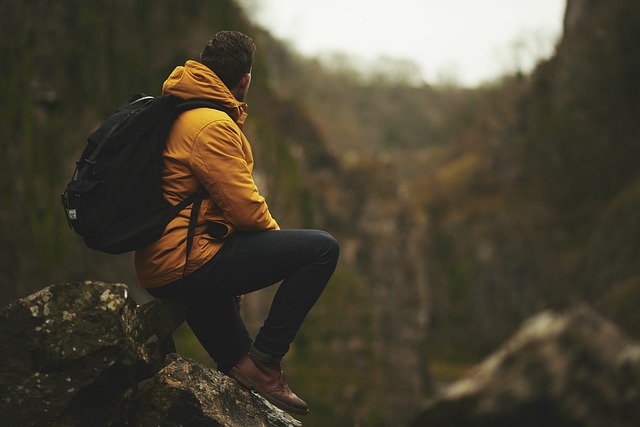Alpine hiking
This type of hiking is an exhilarating outdoor activity that takes place in mountainous regions, typically at higher altitudes. It involves traversing rugged terrain, steep slopes, and challenging trails while surrounded by breathtaking alpine landscapes. Alpine hiking offers a unique opportunity to explore and connect with nature, providing a sense of adventure and physical challenge. It often requires a higher level of fitness and experience compared to regular hiking due to the demanding conditions and unpredictable weather patterns. With proper preparation, equipment, and knowledge of the mountain environment, alpine hiking can be a rewarding and unforgettable experience for outdoor enthusiasts.

Alpine hiking preparations
Preparing for alpine hiking requires careful planning and consideration of various factors to ensure a safe and enjoyable experience. Here are some steps to help you prepare:
-
Physical Fitness: Alpine hiking can be physically demanding, so it’s important to improve your fitness level before embarking on such a journey. Incorporate cardiovascular exercises, strength training, and endurance activities into your fitness routine to build stamina and prepare your body for the challenges of hiking in high-altitude environments.
-
Research and Route Planning: Thoroughly research your chosen alpine hiking destination. Study maps, guidebooks, and online resources to understand the terrain, difficulty level, and potential hazards. Identify the trails and routes that match your skill level and interests, considering factors such as elevation gain, distance, and estimated time.
-
Gear and Equipment: Invest in high-quality hiking gear and equipment that is suitable for alpine conditions. This includes sturdy hiking boots, layered clothing for varying weather conditions, a waterproof and windproof outer layer, a backpack with proper support and ventilation, trekking poles for stability, and a well-fitted backpack. Don’t forget essential items like a map, compass, headlamp, first aid kit, whistle, and sufficient food and water.
-
Altitude Acclimatization: Alpine hiking often involves hiking at high altitudes where the air is thinner and oxygen levels are lower. It’s crucial to acclimatize properly to prevent altitude sickness. Gradually increase your elevation and allow time for your body to adjust before attempting strenuous hikes. Stay hydrated, avoid alcohol and tobacco, and listen to your body’s signals. If symptoms of altitude sickness occur, descend to a lower altitude immediately.
-
Skills and Training: Gain knowledge and skills specific to alpine hiking. Take courses or workshops on wilderness survival, navigation, first aid, and mountain safety. Learn about weather patterns, avalanche awareness, and emergency procedures. Practice using your gear and navigation tools before your hike to become familiar with their functionality.
-
Weather Monitoring: Stay informed about weather conditions before and during your hike. Check local forecasts, monitor weather updates, and be prepared for sudden changes. Postpone or modify your plans if adverse weather is expected or if conditions become unsafe.
-
Safety and Communication: Prioritize safety during your alpine hike. Inform someone trustworthy about your hiking plans, including your route and estimated return time. Carry a reliable means of communication, such as a charged cell phone, satellite communicator, or a two-way radio. Be aware of emergency contact numbers and locations of nearby rescue services.
-
Leave No Trace: Practice Leave No Trace principles to minimize your impact on the environment. Respect wildlife, follow designated trails, dispose of waste properly, and leave natural and cultural features undisturbed.
By following these steps and adequately preparing, you can enhance your alpine hiking experience and ensure your safety while immersing yourself in the beauty and challenges of the mountains. Remember, alpine hiking can be unpredictable, so always prioritize safety and be prepared to adjust your plans accordingly.

Basic alpine hiking equipment
When preparing for alpine hiking, having the right equipment is essential for your safety and comfort in the challenging mountain environment. This type of hiking is more challenging compared to backpacking and the equipment will be more. Here is a list of basic equipment needed for alpine hiking:
-
Hiking Boots: Invest in a pair of sturdy, waterproof hiking boots with ankle support. They should be comfortable and properly broken in to prevent blisters and provide traction on uneven terrain. Hiking shoes must be very carefully selected as they are the first contact with the ground and environment surrounding you.
-
Layered Clothing: Dress in layers to accommodate changing weather conditions. Include moisture-wicking base layers, insulating mid-layers, and a waterproof and windproof outer layer. Pack extra clothing in case of unexpected weather changes.
-
Backpack: Choose a backpack with a capacity suitable for carrying all your gear and supplies. Look for one that has a supportive hip belt and shoulder straps for comfort. Ensure it has compartments and straps for organizing and securing your items.
-
Trekking Poles: Trekking poles provide stability and reduce strain on your knees and joints during steep ascents and descents. Opt for adjustable poles made of lightweight and durable materials.
-
Navigation Tools: Carry a map, compass, and/or a GPS device to navigate your route effectively. Familiarize yourself with the use of these tools before your hike to ensure you can find your way.
-
Headlamp: A reliable headlamp is essential for hiking in low-light conditions or during early morning or evening hikes. Choose one with a long battery life and different brightness settings.
-
First Aid Kit: Pack a well-stocked first aid kit that includes items like adhesive bandages, sterile gauze, adhesive tape, antiseptic wipes, pain relievers, blister treatment, and any personal medications you may need.
-
Water and Food: Carry an adequate supply of water to stay hydrated throughout your hike. Consider a water reservoir or water bottles. Pack energy-rich snacks, meals, and trail mix to fuel your body during the hike.
-
Emergency Shelter: Carry a lightweight emergency shelter such as a bivy sack or emergency blanket to provide protection in case of unforeseen circumstances or emergencies.
-
Sun Protection: Protect yourself from the sun’s rays with sunscreen, sunglasses, and a wide-brimmed hat. Consider wearing UV-protective clothing as well.
-
Personal Locator Beacon (PLB) or Satellite Communicator: In remote areas, a PLB or satellite communicator can be a lifesaving device. It allows you to send emergency distress signals and communicate with rescue services when cellular signals are not available.
-
Whistle and Signal Mirror: Carry a whistle to attract attention in case of emergencies, and a signal mirror to communicate with search and rescue teams if needed.
Remember to consider the specific requirements and challenges of your alpine hike when selecting equipment. It’s essential to test and become familiar with your gear before your trip to ensure it fits well and functions properly. Always prioritize safety and be prepared for unexpected situations in the mountains.
Alpine hiking FAQs
Q: What is the optimal amount of water for one person doing one-day alpine hiking?
A: The optimal amount of water to take for one day of alpine hiking is generally recommended to be at least 2-3 liters (68-102 ounces). However, this can vary depending on factors such as hike duration, intensity, temperature, altitude, personal hydration needs, and water availability along the trail. It’s essential to consider these factors and adjust your water intake accordingly to stay properly hydrated. Consulting experienced hikers or local authorities can provide more specific guidance based on the conditions of your hike.
Q: What are the most common alpine hiking injuries?
A: The most common alpine hiking injuries include sprains and strains, especially in the ankles and knees, due to uneven and challenging terrain. Falls and slips can result in fractures or bone dislocations, particularly in the wrists, arms, and legs. Additionally, overexertion, such as dehydration, heat exhaustion, and altitude sickness, can occur if hikers do not properly prepare or acclimatize to high-altitude environments.
Trails
Nature
Forest
Mountain
Coastal
Urban
''The journey of a thousand miles begins with a single step.''

